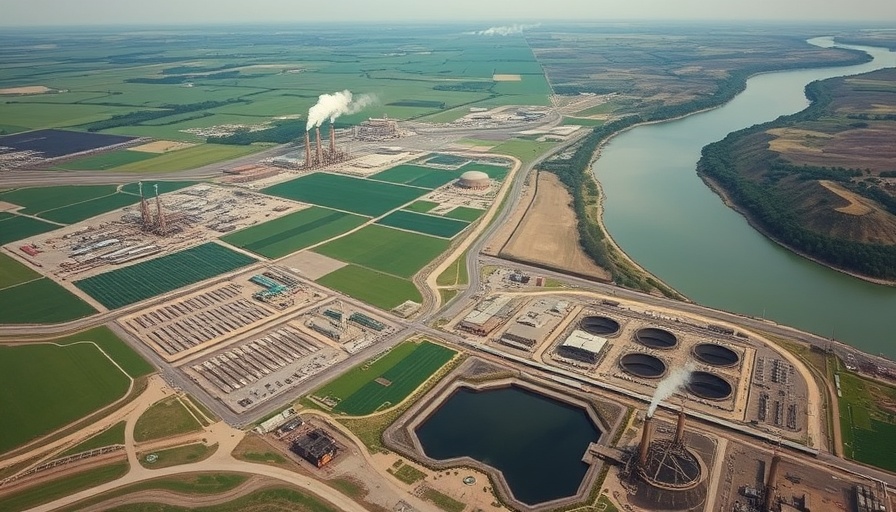
Rising Concerns Over Coal Ash Management in Ohio
The former Walter C. Beckjord coal plant site alongside the Ohio River has become a focal point of concern for local officials and residents. With millions of tons of toxic coal ash contained in unlined pits, the risk of contamination during natural disasters—such as recent flooding—has prompted serious scrutiny. Clermont County officials have voiced frustration regarding the apparent lack of oversight from state agencies, particularly the Ohio Environmental Protection Agency (OEPA) and the Ohio Department of Natural Resources (ODNR).
The Pitfalls of Oversight
Local governance has limitations; as noted by Pierce Township Trustee Allen Freeman, the township holds limited authority regarding inspections, which leaves the community reliant on state agencies for critical management. Freeman highlighted that neither the OEPA nor ODNR conducted inspections during the flood, raising questions about accountability and transparency. This situation has ignited frustration among community members who are concerned about the immediate environmental implications of the floodwater’s interaction with toxic materials.
Unlining the History of the Beckjord Plant
The Beckjord plant, which began operations in the 1950s, was a significant source of electricity for homes and businesses across Southwest Ohio before its closure in 2014. After being sold to Missouri-based Commercial Liability Partners and New Richmond Development Corp., there has been a shift in focus toward redevelopment rather than environmental concerns. According to environmental advocates, prioritizing redevelopment must include a plan for safe management of hazardous materials on the site.
Implications for Wildlife and Watershed
Concerns around health and safety extend beyond human populations; the potential interaction between floodwaters and uncontained coal ash can have dire consequences for local wildlife and aquatic ecosystems. As flood levels begin to recede, ensuring that the ash does not leach toxins into the rivers and streams remains paramount.
What Are State Agencies Doing?
Despite local worries, both the ODNR and OEPA have maintained—at least publicly—that they do not see immediate threats at the site. ODNR officials indicated that their dam safety engineers had communicated with local authorities, affirming no known issues. However, public perception of adequate intervention remains an area of concern, with calls for increased action and real-time monitoring during challenging weather conditions.
Collaboration for a Secure Future
Addressing the complexities surrounding the management of coal ash pits requires collaborative efforts among local officials, state agencies, and the community. Increased communication and transparency would foster trust and assure residents that their safety is a priority. Engaging community stakeholders in dialogue is essential in finding a balanced approach to both redevelopment and environmental stewardship.
What Can Residents Do?
Residents concerned about the safety and oversight of the Beckjord site can take proactive steps. They may engage with local government meetings to discuss environmental safety or collaborate with advocacy groups aiming to secure better regulation and oversight. Hosting community forums can also foster discussions around local environmental issues, drawing in experts and potentially influencing state agency actions.
Ultimately, the health of local ecosystems and communities hinges on responsible management of former industrial sites. It may also serve as a case study for other regions grappling with similar issues, highlighting the need for accountability and action in safeguarding natural resources.
 Add Row
Add Row  Add
Add 




 Add Row
Add Row  Add
Add 








Write A Comment